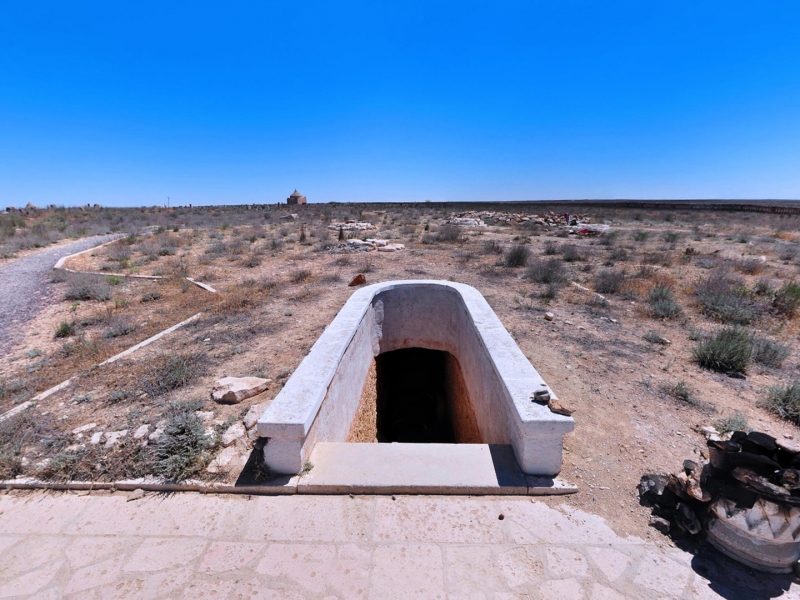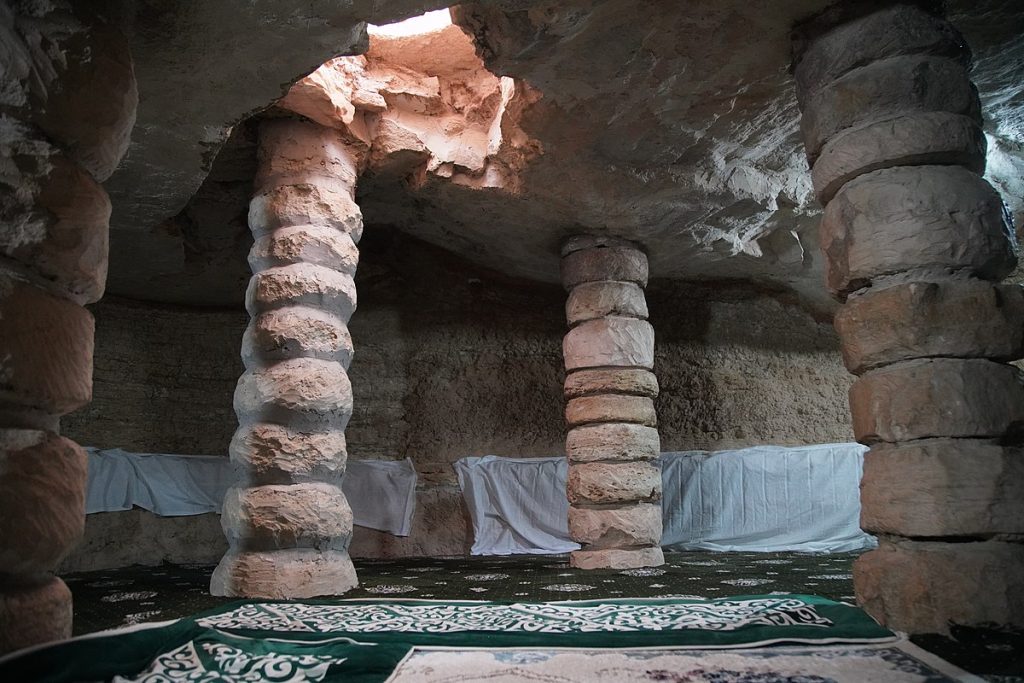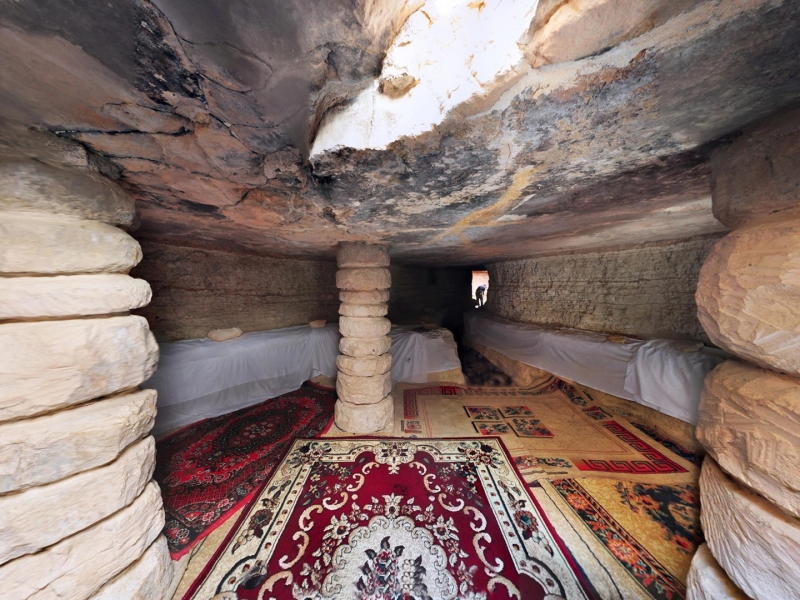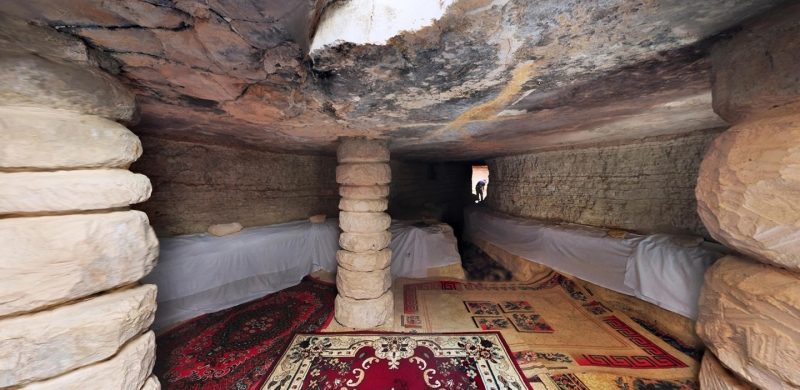The Karaman Ata Underground Mosque in Mangystau stands as a distinctive religious and architectural monument, embodying the essence of the 12th-17th centuries. Carved into the lower layer of a mountain gorge, it utilizes natural caves in its construction.

The sanctuary lies beneath the earth’s surface, consisting of three primary chambers: an entrance hall, a prayer hall, and a circular room serving as the resting place of Karaman Ata. Circular windows, deliberately cut into two rooms, allow natural light to illuminate the interior. As a sacred space, the mosque attracts pilgrims who come to Mangystau seeking spiritual connection.
Situated 35 km from the village of Shetpe in the Mangystau region, and 5 km west of the Kandybas wintering area, the Karaman Ata necropolis rests near the Kandybas ridge on the western side of the village of Beki. It is one of the oldest burial grounds in the region.

Numerous legends surround Karaman Ata. According to one account, he played a pivotal role in leading the Turkmens from the Balkan Peninsula to Mangistau. Locals describe him as a wise, honest, and just man, earning his burial site the name «Oath-Sweeping» place, where disputes were settled. Influential individuals from the Adai clan find their eternal rest on the grounds of the underground mosque.
Presently, a substantial portion of the Karaman Ata necropolis is enclosed. Covering a total area of 4 hectares, it contains around 40 tombstones on the southwestern slope, characteristic of the 8th-9th centuries.

Designated as a historical and cultural monument with Republican status in 1982, the Karaman Ata complex enjoys state protection. Mangystau, often referred to as «the land of 360 sages,» boasts a captivating natural museum with every mountain and stone contributing to its picturesque landscape.
This region is a magnet for tourists, and for those planning a visit, including the Karaman Ata Mosque in their itinerary is essential. Beyond architectural grandeur, it offers a unique cultural heritage, making it a truly special and distinct place.
Photo by akimat ofMangystau region



